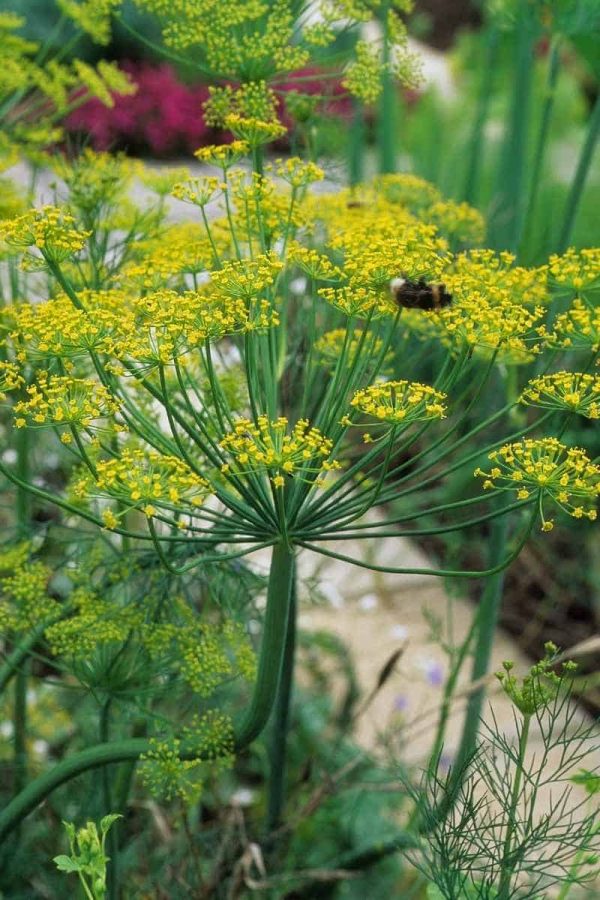Herbs are one of the first plants we recommend new gardeners grow—mostly because they are just so darn easy! And dill is no exception. Dill is a breeze to grow and a great friend to many plants in the garden. It’s so useful as a companion plant that we like to pop dill plants wherever we have extra space in the garden!
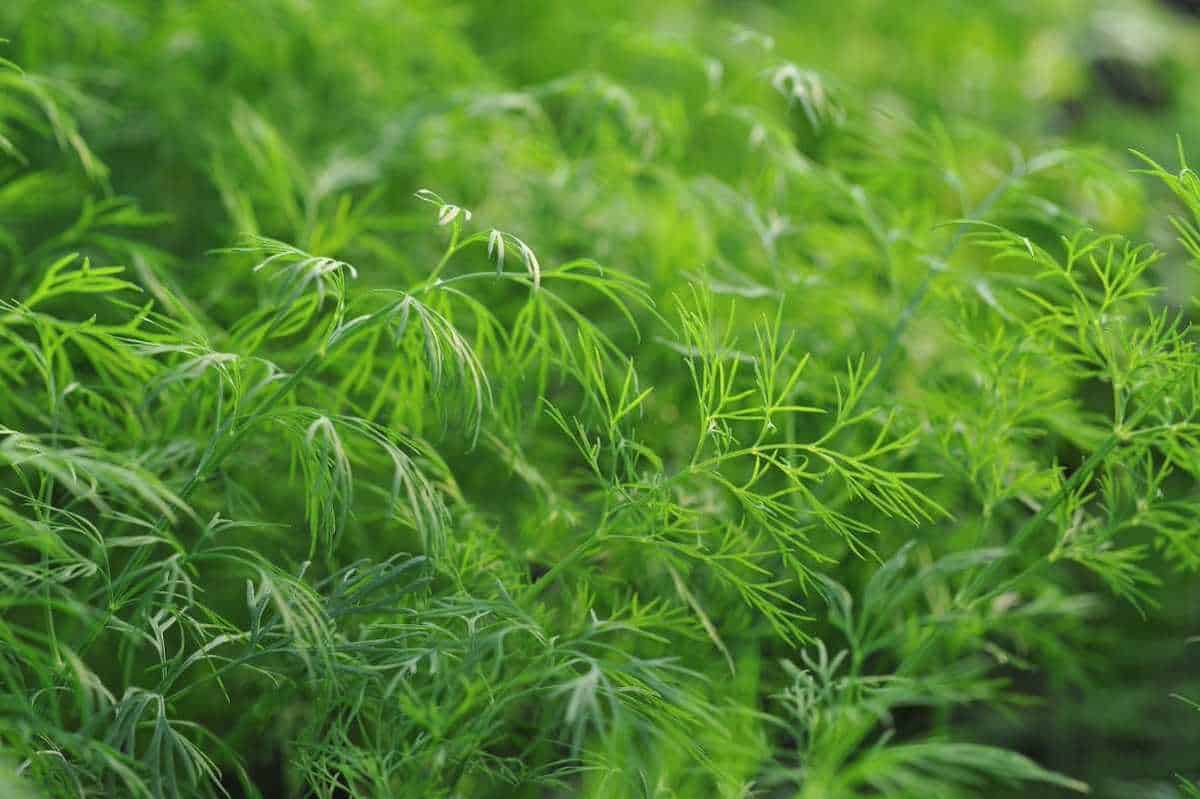
Table of Contents
Is growing dill easy?
Yes! Dill is one of the easiest herbs you can grow in your garden. It’s a tough, hardy plant that thrives in conditions a lot of tender herbs cannot. You don’t need any special gardening experience to grow dill. In fact, even if you’re a beginner gardener, consider planting this herb because of its culinary uses and the number of beneficial pollinators it’ll attract to your garden!

Does dill come back every year?
Dill is what’s known as a self-seeding annual. Because it’s a self-seeding annual, the plant itself dies each year, but the seeds from the plant land in the soil to germinate and sprout the next year. This means that although the plant only grows for a season, you can nurture a patch of dill year after year with proper care.
So how do you keep dill growing year after year? At the end of the growing season, allow some dill plants to flower. The yellow flowers of a dill plant will look beautiful in your summer garden and attract many pollinators and beneficial insects. Those flowers also contain the seeds for next year’s dill plants. If you allow your dill weed to flower and go to seed, you’ll have delicious, early dill the following year.
Dill varieties
Choosing the right variety of dill is a matter of personal preference. Are you going to be growing dill in containers or in the garden? Do you want to re-plant it every year, or are you looking for it to self-seed? Are you planning to cook with your dill or use it in canning recipes? Before choosing a dill variety, consider these questions to better understand which type is best suited to your needs.
- Bouquet dill—This variety grows quite tall, and it produces a lot of seeds. This makes it an excellent choice for in-garden planting as well as encouraging your dill plants to re-grow the following year. You can also use the dill seeds in recipes. This is also our favorite dill for making pickles—the large number of seed heads are perfect for canning.
- Fernleaf dill—This variety is compact, making it well-suited to container gardening.
- Mammoth dill—A great variety for pickling recipes and one of the best culinary dill varieties. It’s delicious with soups, salads, and fish. Mammoth dill can reach upwards of five feet, so it requires a lot of space in your garden.
- Dukat dill—A compact variety that’s well-suited to container gardening. This is a good dill for adding to salads, and it’s a brighter green than other varieties of dill weed.
- Vierling—This is a long-lasting dill variety that takes longer to bolt than other dills. If you want a prolonged harvest throughout the summer months, Vierling is an excellent choice.
Growfully Protip
You might see “white dill” in the seed catalog, but don’t think this is the edible dill you are used to having with bagel and lox. White dill is another name for Ammi majus AKA: Queen Anne’s Lace. It’s related to edible dill, but it’s grown for ornamental purposes, not culinary.

Should I be growing dill from seeds or starts?
Growing dill from seed is easy to do and doesn’t require a lot of gardening knowledge. Most gardeners prefer to grow dill from seeds because dill creates a long taproot—similar to a carrot—that makes it difficult to transplant.
Growfully Protip
You can transplant dill if you can grow your seedlings in a way that doesn’t disturb the taproot (like soil blocks, newspaper pots, or peat pots). Just be aware that oftentimes, dill has a tendency to bolt when transplanted.
When should I plant dill?
Direct sow dill seeds in late spring about two weeks before your last frost date. Dill is pretty hardy to chilly temperatures, but it doesn’t like hard freezes—so if one is in the forecast after your seeds have sprouted, cover your tender plants with row covers or cloches.
The soil temperature needs to be between 60°F and 70°F for dill seeds to germinate. You can increase the temperature of the soil if you live in a cooler climate by covering it with black gardening plastic or fabric. The black plastic will trap the sun’s heat and increase the soil temperature faster.
How do I plant dill seeds?
Dill seeds are some of the easiest seeds to plant. Direct sow dill seeds ¼ inch deep and spaced 18 inches apart. Firm the dirt over the seeds and water well. To encourage germination, you can use a floating row cover to help hold in the sun’s heat until seedlings appear.
It’ll take 10-14 days for the seeds to germinate under ideal conditions. After germination, wait a few weeks for the seedlings to grow a few sets of true leaves. If your plants look to be spaced too closely together, thin the weakest seedlings so there are 12-18 inches between plants. The best way to do this is to snip the seedling at the soil level so as not to disturb the remaining plants.
Does square foot gardening work for growing dill?
Yes! Dill is an excellent candidate for square foot gardening. In a single square foot, you can grow four dill plants. To plant dill in a square foot garden:
- Section off a square foot and place four evenly spaced holes in the square. You can buy—or make—guides to help you with this, or you can just eyeball it.
- Make sure the holes are ¼ inch deep.
- Plant one or two seeds in each hole.
- Cover the seeds with soil, tamp down firmly, and water well.
Growfully Protip
If you plant two seeds to a hole, you’ll have to thin the weakest seedling in each hole by snipping it at the base down the line.
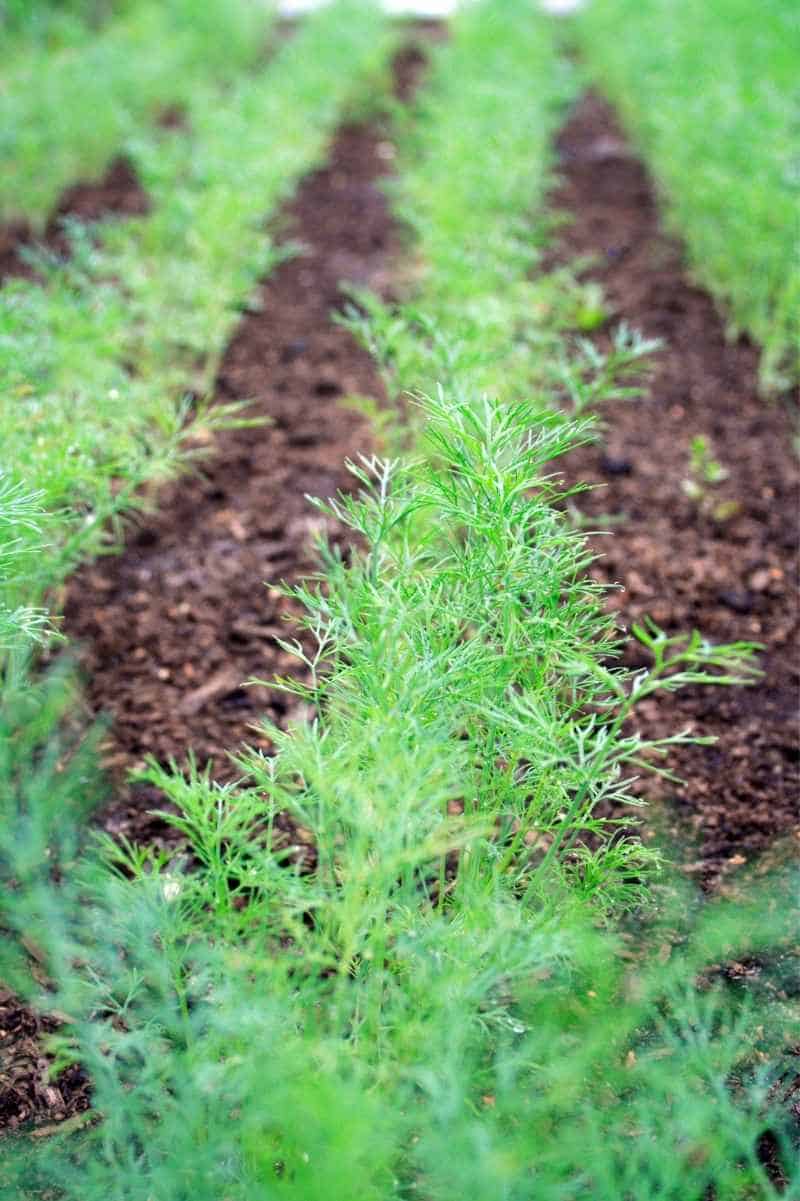
Where do you plant dill?
You can plant dill directly in your garden or in a container. This makes it a versatile herb that you can grow no matter how much space you have.
Growing dill in a container
Planting dill in a container is beneficial if you want to move your plants throughout the growing season or if you don’t have the space for a large garden. A single dill plant will produce plenty of fresh dill and dill seeds for your culinary needs.
If you choose to plant dill in a container, make sure it’s deep enough to allow room for the long taproot of the dill to grow. A container a foot or two deep will work perfectly. You want to fill your container with good quality potting soil and place it in a location that’s sheltered from strong winds while still being exposed to sunlight.
Growing dill in the garden
Dill is an excellent addition to any garden. Choose a location for growing dill that has well-draining and fertile soil. We recommend working in some well-rotted compost or manure before planting in the spring. In terms of soil pH, dill grows best in neutral to slightly acidic soil.
Dill grows well in full-sun, but it can also tolerate part-sun or part-shade locations—we grow dill in a spot that gets 2-3 hours of afternoon sun each day. It’s best to plant dill in a location that’s sheltered from the wind. High winds can break a dill plant if it’s not protected or staked up.
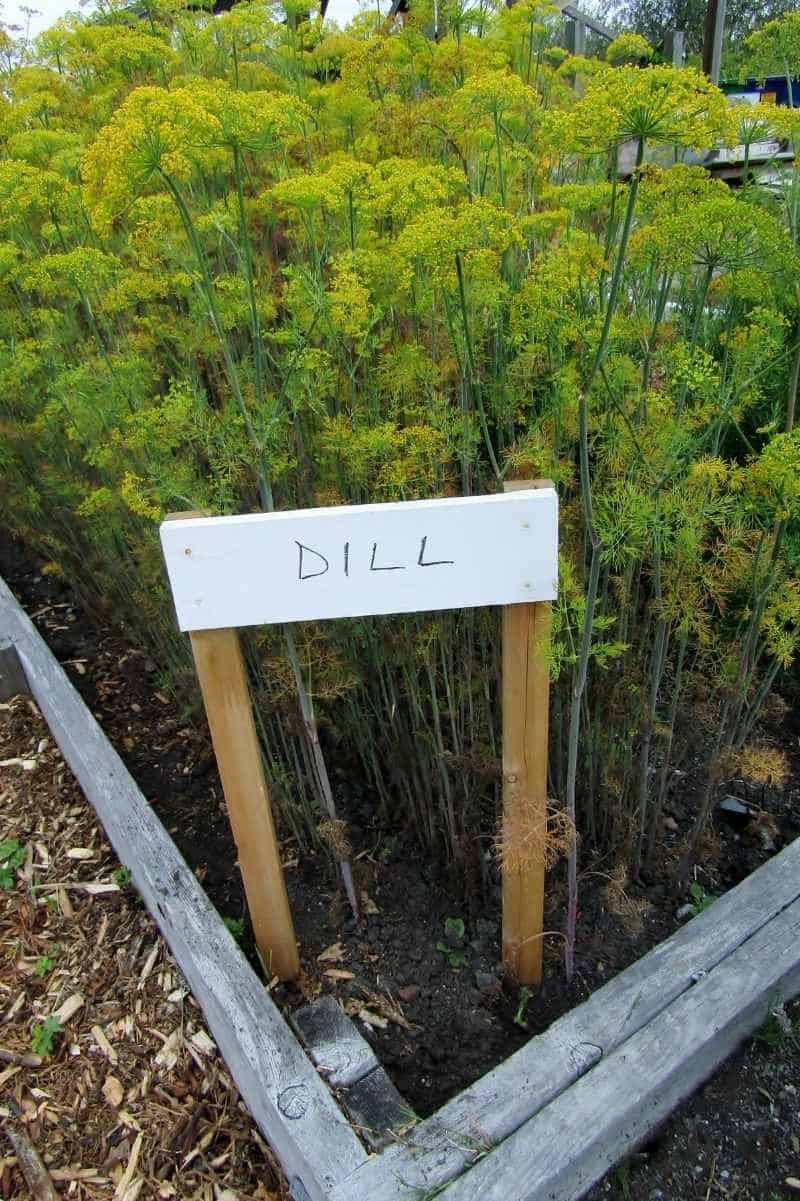
How long does it take to grow dill from seed?
After you plant dill seeds, germination will take somewhere between 10-14 days. Temperatures cooler than 60°F will slow germination, so your soil must be warm enough before planting your dill seeds.
After germination, you can expect to harvest dill pretty quickly—2-4 weeks depending on the growing conditions.
Growfully Protip
Like most leafy herbs, dill benefits from frequent trimming! As soon as the leaves are large enough to use, regularly clip off sprigs to use in your cooking. This will encourage the plant to put out more leaves for you to use. In fact, the most common cause of sparse herb plants is folks simply not clipping from them enough!
How long does a dill plant last?
Dill plants last as long as it takes for the plant to bolt and create seeds. In most climates, this is process typically happens within one growing season.
Growfully Protip
In milder climates, you can get two or more rounds of dill in a season by succession planting seeds.
Regardless of whether you are considering growing dill again next year, we recommend allowing dill plants to bolt and go to flower. Pollinators love dill flowers! And if you do plan to grow dill again, you’ll get the benefit of it self-seeding for next season.
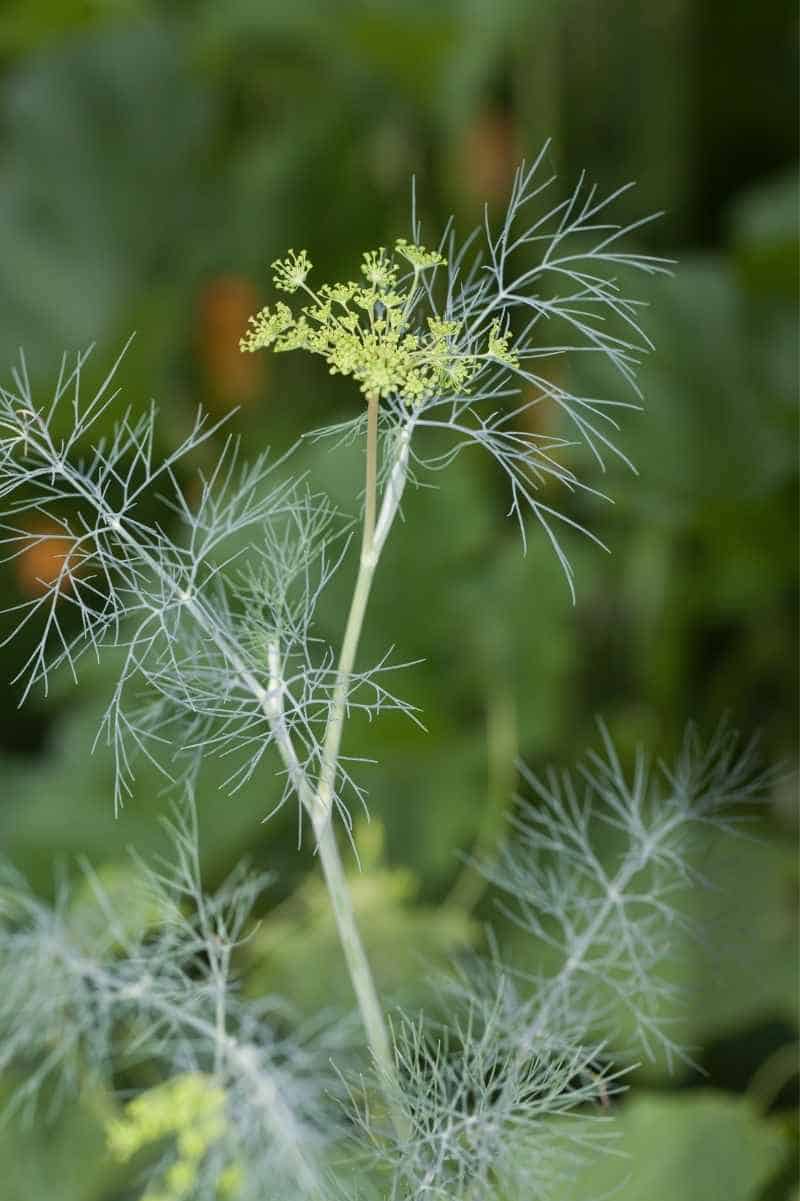
How to care for growing dill
Dill is a relatively easy plant to care for during the growing season. It requires a steady supply of water so the roots don’t dry out completely. As long as you supplement your soil with well-rotted manure or compost before planting, your dill plants won’t need fertilizer throughout the growing season.
Be careful when weeding around a dill plant so you don’t disturb the roots. Using a good quality mulch around the base of your dill goes a long way towards weed suppression and soil moisture retention.
You may find that your dill requires staking as it grows larger. Dill plants have a tendency to grow tall and leggy, which makes them susceptible to breaking or bending during windy days. Planting several dill plants close together can prevent the need for staking, as the plants will support one another.
Growfully Protip
You can encourage your dill plant to grow bushy by pinching off the leaves that are growing closest to the top of the plant. Removing the upper leaves will encourage a dill plant to grow large and bushy as opposed to tall and leggy. Use all that good dill that you trim off!
What can I plant with dill?
Dill makes a great addition to any garden because it’s a good companion for other plants. The flowers on your dill plant will attract beneficial insects and pollinators that will help other plants thrive.
Dill helps encourage predatory insects to ward off pests that plague corn, cucumbers, asparagus, basil, and lettuce, making it a good companion for all these plants.
The aromatic scent of dill helps deter cabbage loopers and cabbage worms that may harm your brassicas. Therefore, it’s a good idea to plant dill near kohlrabi, cabbage, Brussel sprouts, broccoli, kale, and collards.
Garlic and onions are good companions for dill because their scent scares off aphids that may target dill plants. Celery is another good companion plant to consider planting with dill.
Growfully Protip
Avoid growing dill near lavender, peppers, eggplant, potatoes, carrots, and fennel. Planting dill near carrots can attract more pests since carrots and dill are both part of the umbellifer family.
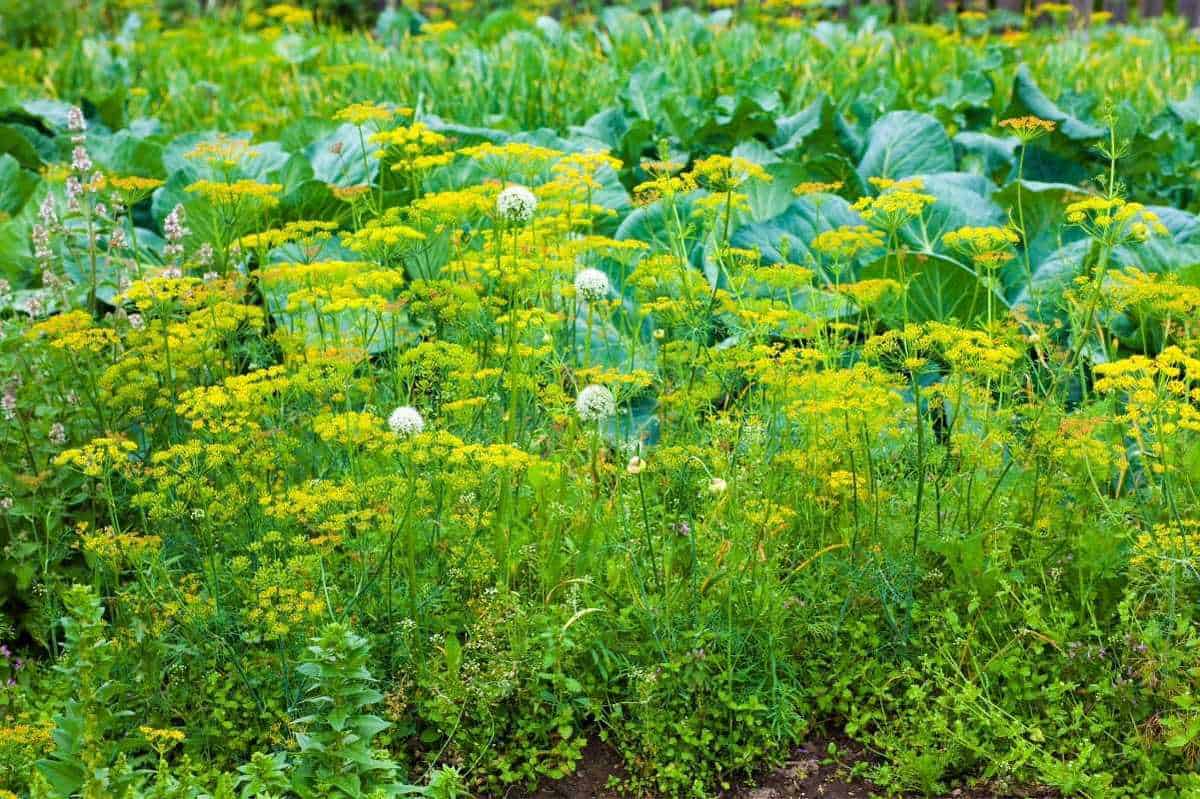
Can I try growing dill indoors?
Yes! Choose a dwarf variety or other small variety of dill, such as Fernleaf dill or Dukat dill. Choose a pot that is at least a foot deep if possible. Place the pot in a sunny location and water it several times a week.
Once your dill has at least four sets of true leaves, you can begin harvesting the leaves. Trimming the top of your dill plant and removing any buds before they can flower will keep your dill compact and bushy so it doesn’t outgrow its indoor container.
Growing dill: troubleshooting
Dill is a remarkably easy plant to care for, and there are very few issues you’ll run into when growing this culinary herb. But let’s talk about the few that you might see:
- If dill is drooping over, you may have planted it in an area with too little sunlight or overwatered it.
- If your dill plant is covered in white growth, it may have a disease known as powdery mildew. Overwatered dill plants and low air circulation often cause this.
- If you see holes in the dill’s leaves, you may be dealing with aphids. Aphids are a nuisance pest that can affect almost every plant in your garden. In large numbers, they can cause quite a bit of damage. Neem oil soap and insecticidal soap are both effective at removing aphids.
Growfully Protip
Dill has a built-in solution to the aphid pest problem! Flowering dill attracts ladybugs, who love feasting on aphids. If your dill is flowering, you may not have to do anything to get rid of aphids.
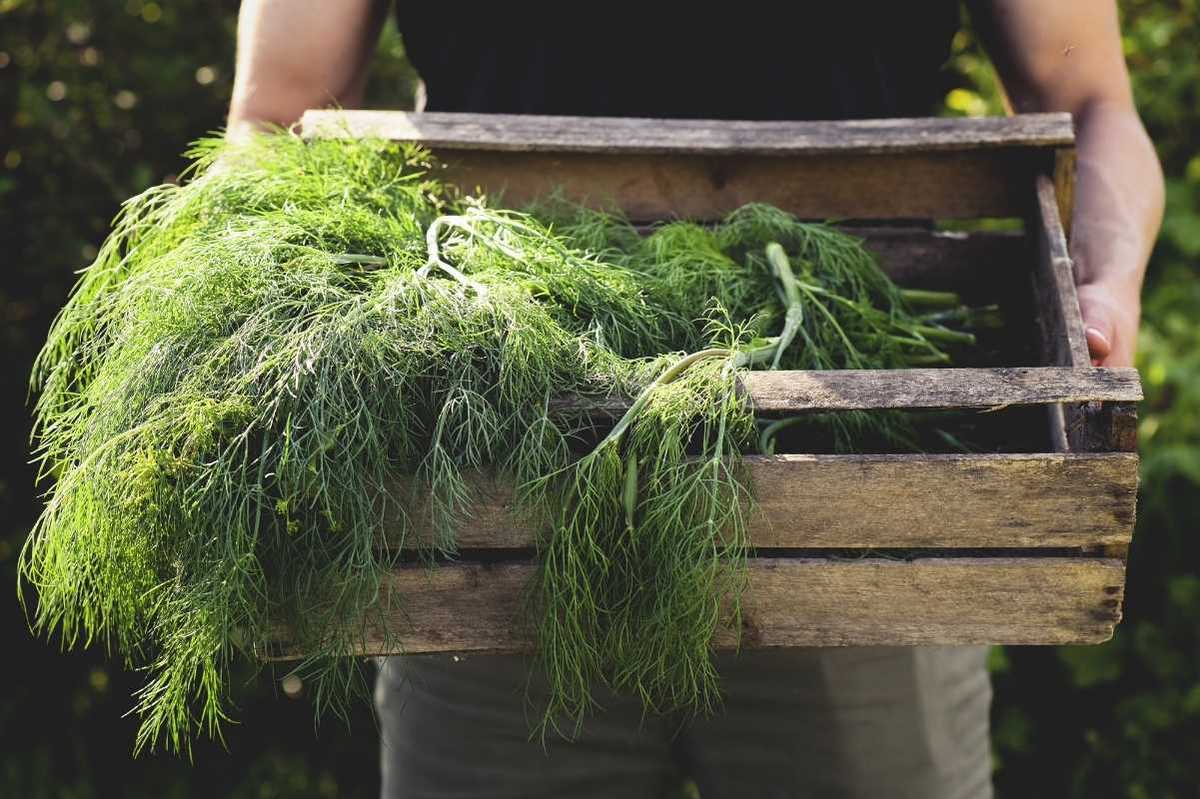
How to harvest dill
If you’re in a hurry to harvest some delicious dill, you can begin harvesting the leaves as soon as the plant has several sets. To harvest the leaves, snip off the ones you want near the base of the stem. You can either use your fingernails or some sharp garden scissors for this.
Harvest dill leaves as you need them, and avoid taking more than 1/3 of the leaves at a time. Frequent harvesting will encourage the plant to produce more growth, and harvesting off the top of the plant will encourage outward, bushy growth.
What about harvesting dill seeds?
If seeds are the part of the plant you want, allow the dill plants to flower and wait for the seeds to turn brown. Place a paper bag over the head of the dill and gently shake the seeds into the bag. Once collected, the seeds will need to dry completely in the paper bag for a week or more. Once dry, crush the seed heads between your fingers to remove the seeds and blow away the lighter chafe, so you’re left with only seeds.
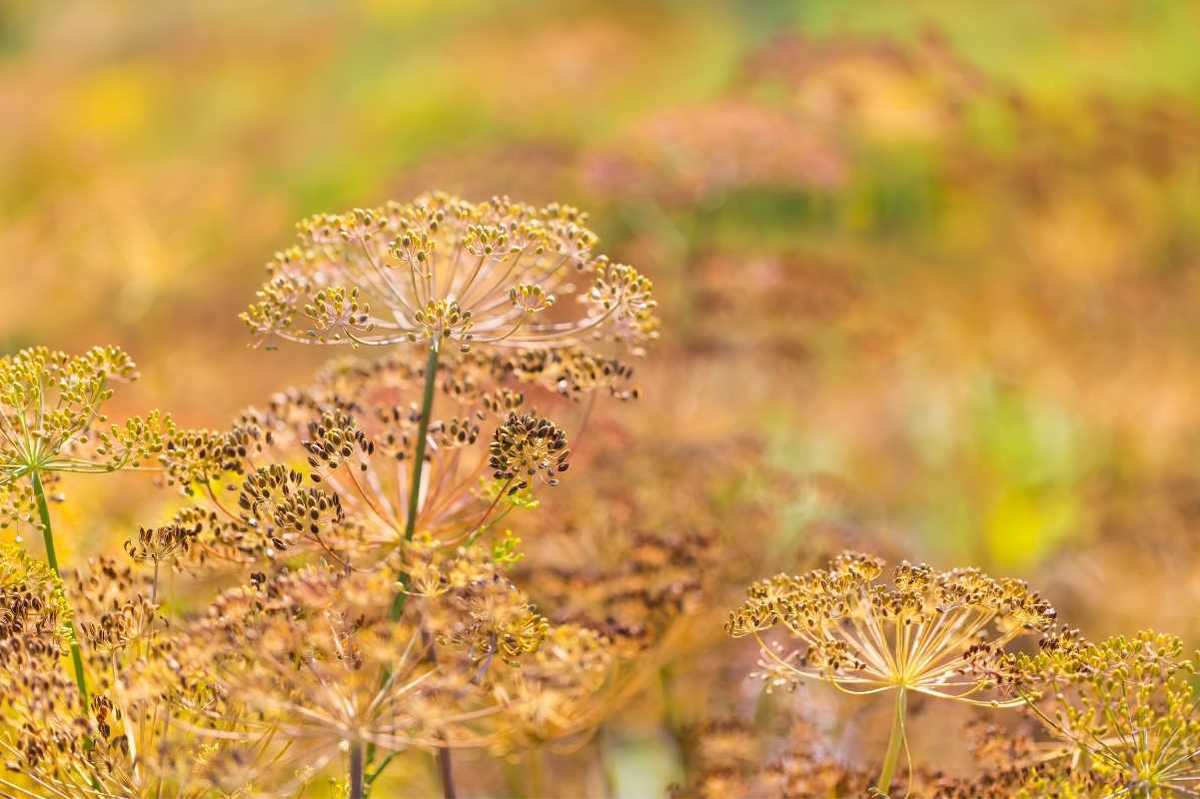
How to store dill
To store dill leaves, spritz them with water, then wrap the stems and leaves in a paper towel. Place the wrapped bundle in a plastic storage bag and keep it in the vegetable crisper in the fridge. Stored this way, dill leaves should stay fresh for a week.
Alternatively, you can put the dill stems in a glass jar of water (like you would flowers!) in the refrigerator for 7-10 days or on the counter for three days, changing the water daily.
To store dill seed, place it in an airtight plastic or glass container. Keep it out of direct sunlight in a cool, dry location. Stored in these conditions, dill seed should last three years.
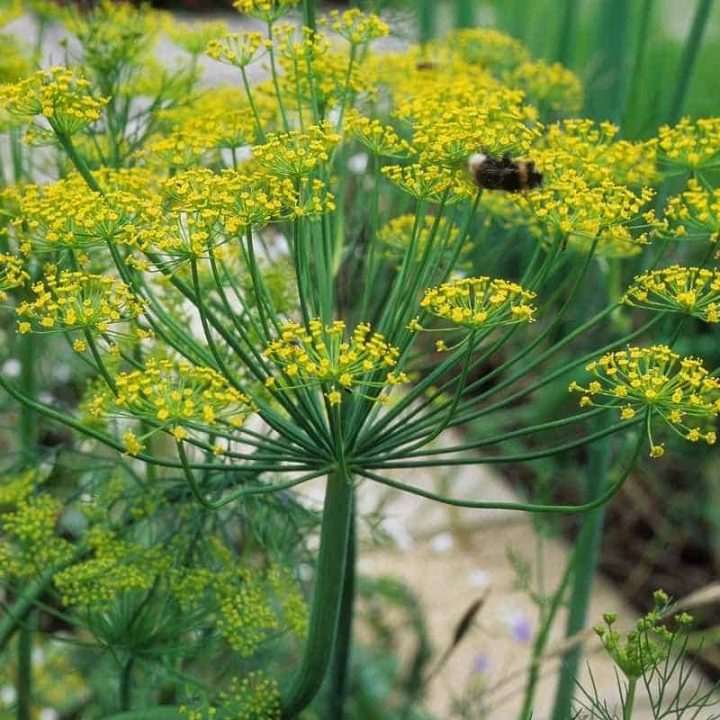
Growing Dill
Materials
- Dill seeds
Tools
- Well-draining and fertile soil
Instructions

- Give it shelter. Dill plants can grow tall and leggy, leaving them prone to breaking on a windy day. Plant dill in a spot that is sheltered from the wind, or allow dill plants to lean into each other for support.
- Supplement the soil. Before planting, mix some compost or well-rotted manure into your soil. After that, dill shouldn't need any additional fertilizer.
- Let it go to seed. Let some of the dill go to seed. Not only do pollinators and other beneficial insects love the seeds, but this will also allow the dill to self-sow for next year.
- Use dill for stronger plants. Pinching off the top leaves of dill on a regular basis will make the plant grow bigger, bushier, and lusher.
- Companion plant. Dill can encourage predatory insects and deter pests from many vegetables and herbs, so plant it liberally throughout the garden.

